Behind the Numbers: Ibis Ripmo V2
Behind the Numbers is made possible by Creaform Portable 3D Measurement Technologies.
Our penultimate bike in the trail category series continues with the short link theme from last week's Unno, but adds in one of the most well-known suspension design tags, and names, in the business.
The Ibis Ripmo first arrived back in 2018. Not long after, the Ripmo AF, an aluminum framed update of the V1, came into existence and would provide a crystal ball into the future of the Ripmo. The carbon framed V2 arrived not long after we’d put the crystal ball away and at almost 900g lighter used the same geometry and kinematic layout as the AF, which received a lot of praise for its ride characteristics, aluminum construction and price point.
Scanning
I have to hold my hands up and admit I made a bit of a cockup with this bike.
In the organisation for gathering the bikes we were in discussing the Ripmo V2 just prior to its launch. And actually, I mistakenly took a V1 to be scanned. The two bikes are pretty damn similar, and there have even been Ripmo V2s out in the wild with the same paint job as the V1. Providing more excuses, I was pretty focussed on the motherload of expensive bikes I’d packed into the back of my van from The Factory Bike shop, keeping them safe and scratch free. But I digress.
Mistakes happen from time to time and nevertheless, we completed the scan knowing that we had at least done the hard part of figuring out the bike’s kinematics. We approached Ibis with our tail between our legs and they were kind enough to let us know which specific points on the bike had changed from V1 to V2 and by how much. Turns out it was the shock mount on the mainframe that was the biggest change to the kinematic, which made our modification very simple and we could quickly and easily carry on with the analysis knowing that we were spot on with analysing the V2 iteration of the Ripmo.
Having worked behind the scenes with brands, I know that they are often very secretive about their kinematics and designs, so a very big thank you goes out to Colin Hughes and Andy Jacques-Maynes of Ibis for being so open, easy to work with and helping us out.
A live mesh of the scan helps you see what is already scanned, what needs scanning and which way to point the scanner to best fill in the missing bits of data that you need. With the interface of the hardware and software being intuitive, you can get all that data quickly and easily.
Despite the “only” kinematic difference being the shock position on the mainframe, this required Ibis to make not only a new mainframe but also a new rear triangle to account for the extra space needed for the shock extender. So, if you have a V2, then it’s a new bike compared to the V1.
That then means that all the other Ripmo V2 pivot points are in the same place as the bike we scanned and we could simply add in the changes to the head angle and reach that would affect the anti-squat and anti-rise.
The Ripmo has a lot of tucked away details, especially on the top link to swingarm pivots, but scanning it with the MetraSCAN 3D was a doddle. Having complicated hardware and software can make it tricky to concentrate on the job in hand, but the MetraSCAN has not only an intuitive hardware interface on its disco ball like scanner and C-track setup, but the interface with the scanning software is also intuitive, easy to pick up and use while scanning. That let us focus more on capturing the exact data we needed rather than wrestling with the scanning system.
Another really helpful factor with the Creafrom setups is the live mesh while you scan. As we were scanning the bikes and the lasers were flowing over the bike surfaces you could watch as the mesh was being built up in real time and from the point of view of the hand held scanner. This made it so quick and easy to know if you’d captured the data you were after, like the hidden link pivots on the Ripmo, and also which way you would need to come at the bike with the scanner to see the relevant surfaces.
It’s possible to pause and resume the scan as many times as you need, constantly adding data to the live mesh before you complete the scan and begin post-processing the mesh file.
The MetraSCAN setup enabled us to scan all the intricate and hidden portions of the Ripmo frame and generate a mesh file ready to extract the kinematic.

The Ibis Ripmo V2 uses a four-bar suspension system with two short co-rotating links. Like other four-bar systems, the instant center is a virtual point in space, depicted here by the engineering standard for showing an instant center - a cat.
The Ripmo V2 is a 29” wheeled, 147mm travel trail bike with a 160mm travel fork.
The Ripmo is a four-bar short link bike. Similar in many ways to the Unno Dash from last week in that the links rotate in the same direction. However, the Ripmo drives the shock from a separate pivot on the rear triangle, and uses a large shock extender to bridge the gap from the rear triangle, around the seat tube to the shock which is nestled inside the mainframe.
The Ripmo is a four-bar short link bike. Similar in many ways to the Unno Dash from last week in that the links rotate in the same direction. However, the Ripmo drives the shock from a separate pivot on the rear triangle, and uses a large shock extender to bridge the gap from the rear triangle, around the seat tube to the shock which is nestled inside the mainframe.
Ripmo V2 Analysis Details
Travel Rear: 147.3mm
Travel Front: 160mm
Wheel Size: 29"
Frame Size: Medium
CoG Height: 1,100mm
Chainring Size: 32T
Cassette Cog Sizes: 50T, 24T and 10T
Travel Rear: 147.3mm
Travel Front: 160mm
Wheel Size: 29"
Frame Size: Medium
CoG Height: 1,100mm
Chainring Size: 32T
Cassette Cog Sizes: 50T, 24T and 10T
Shock extenders are a good way of connecting the rear triangle to the shock, which is nicely positioned inside the main frame, and also allowing an uninterrupted seat tube. However, they can sometimes mean a bike would side load the shock when the bike is getting all loaded up and encountering bumps. Some bike layouts will isolate the shock a little better from the rest of the twisting chassis. Ibis do say that the Ripmo V2 is coil compatible, mainly from the increased progression built into the V2 compared to the V1, but they also say you need a clevis compatible coil shock, which might hint that the bike does put a bit more side loading on the shock than some others.
While it might be a four-bar short link bike, it’s often referred to more as a DW-Link bike. The DW referring to Dave Weagle, who does kinematic design for Ibis and many other brands with the DW-Link tag being something licensed from Dave. Not all DW-Link bikes are the same though, just like not all four-bar short link bikes are the same. The different drivers and inputs for individual bike projects, let alone different brands, can lead to two DW-Link tagged bikes being very different animals.
As we saw last week, moving from the long-linked Norco to the short linked Unno, we have some more pronounced shapes in the curves from those shorter links moving through bigger angles and moving the IC around a different path.
The links on the Ripmo V2 move in such a way that they actually make the IC move from in front of the lower link to behind it. The lower link actually almost stops its rotation during the bike's travel and the top link passes over the 90° mark. Looking at the IC animation you can see this happening and how it puts the IC on the lower link line for a lot of the travel and close to the chain line.
The Ripmo uses cartridge bearings on its upper link and bushings on its lower link. The lower link uses a preload and pinch system to be able to adjust the compression of the bushings before locking the link off, exactly the same idea as your headset and stem. It seems Ibis did encounter some small issues with increased friction on the Ripmo V1 that Mike Kazimer reviewed. However, Ibis have said that they implemented a frame assembly change as well as adjusting the diameters on the pivots to achieve minimum friction with no play. Ibis also put a lifetime warranty on the bushings for extra peace of mind.
The Ripmo points a little more, like the Norco, towards the descending side of things. Many of the Ibis enduro racers have chosen the Ripmo in competition when the terrain called for something with a little less travel than its bigger brother, the Mojo HD5, or if they prefer the feel of the bigger 29” wheels on the Ripmo than the 27.5” Mojo HD5.
Another thing that Ibis have implemented is their Traction Tune. In association with Motion Instruments they worked on developing their own fork and shock tunes on most of their bikes. Some brands already do this behind the scenes, but this could be something we see and hear more about in the future. Essentially the Traction Tune is an internal modification that sees very light high-speed compression and rebound damping to achieve what Ibis claim to be increased traction, control and predictability. Out here in Champéry it seems we run our bikes ridiculously stiff and heavily damped so it would really interesting to learn about how the Traction Tune works in this terrain.

0% Loaded
1/21
The instant center moves around in space as the links that define it move with the rear wheel. The yellow dots represent the pivots of the bike and the red the IC.
Leverage Ratio
The Ripmo V2 has 20.8% progression with a constantly decreasing leverage ratio. It starts at 3.18 and drops down to 2.52. Over that whole range the average leverage ratio is 2.68.
The Ripmo V2 uses a 210 x 55mm stroke shock. The standard eyelet shock making more sense as a trunnion mount would reduce the shock length and mean that either the shock extender or mainframe mount would have to grow.
The leverage ratio curve shape starts out fairly progressive in the first third of travel and becomes much more linear in the last two. But differentiating the curve we can see that it’s actually following more an x^3 shape, as just before the end of travel the curve begins to steepen slightly again. Nitpicking, but this is how we can really magnify what’s going on in the leverage ratio curve.
The Ripmo V2 has a good chunk of overall progression to its suspension, definitely not too much and not too little. Lots of bikes in this category, and in others, do very well with this amount of progression over that leverage ratio range. This is one of the biggest changes between the Ripmo V1 and V2, and something that Mike commented on when he did a First Ride on the V2, and also RC when reviewing the Ripmo AF, which the Ripmo V2 is essentially a carbon fiber version of.
We saw on the Unno that a change in the leverage ratio much closer to the end of travel would result in compensating for the effects in ramp up from an air shock. On the Ibis that switch in progression to linearity comes much sooner in the travel, incidentally almost around the 30% shock sag mark.
This could go towards explaining how the Ripmo manages to climb efficiently while still remaining supple. The high anti-squat figures, which we talk about below, mechanically resist the squatting from load transfer while the linearity in leverage ratio from sag onwards would allow the bike to absorb the impacts while pedalling a little easier than a constantly progressive bike.
That’s not to say one leverage ratio is right or wrong, it’s just that Ibis may have focussed on this particular riding characteristic more than other brands. The downsides of this linearity would come in the form of having a bike that, from sag onwards, would fall a bit into the classic linear bike compromise of traction and bottom out resistance. With that switch in the curve from progressive to linear being close to the sag point it could also be a bit sensitive to setup with too little sag starting you higher up in that progressive section of the leverage ratio.
The curve is still fairly smooth, not quite as close to a straight line as something like the Commencal, but it seems the design drivers behind the Ibis may see them looking to have more kinks and shapes in the curves.
At 30% shock shaft sag there is 32.3% rear wheel travel on the Ibis. This is much closer to the Norco and Commencal and their 2% deviation.
Anti-Squat
The Ripmo V2 comes specced with a 32T chainring across the whole range of build options and we once again take our three reference gears to show the limits of an Eagle cassette and something in the middle.
That short link curve style is apparent again in the anti-squat curves becoming more pronounced as you go into the harder gears.
In the 50T gear the anti-squat sits starts at 119% and falls to 74% with a fairly smooth curve from start to finish. At 30% shock stroke there is 104%. This high anti-squat around the sag point and further into the travel in this easiest climbing gear are providing really good countering of nearly all of the forces from load transfer.
Moving into the 24T cog, the majority of the curve shifts up in the percentages and goes from 133% to 75%. At sag there is now 114%, countering all of the load transfer forces and even going towards countering the other forces attempting to compress the suspension while pedalling, like your legs.
In the hardest 10T cog, though, we see quite a changing curve that starts at a high 170%, does a bit of a high-low inflexion at 140% and finishes back at the same point as the other gears.
This general curve shape, seen most clearly in the harder gears does mean that from the sag point onwards, in one of the zones you spend most of your time pedalling, the anti-squat levels do remain consistently high and explaining how the Ripmo feels like such an efficient climber that never really needs the shock lockout switch to be touched.
There is a drop off in the percentages towards the end of travel, usually done to attempt to reduce the amount of pedal kickback at full travel, but on the Ibis, it only really drops down to 74-75%, which, while under 100%, is still a good chunk of anti-squat. Other bikes that employ this tactic, tend to have much sharper and more drastic drops in anti-squat at the end of travel.
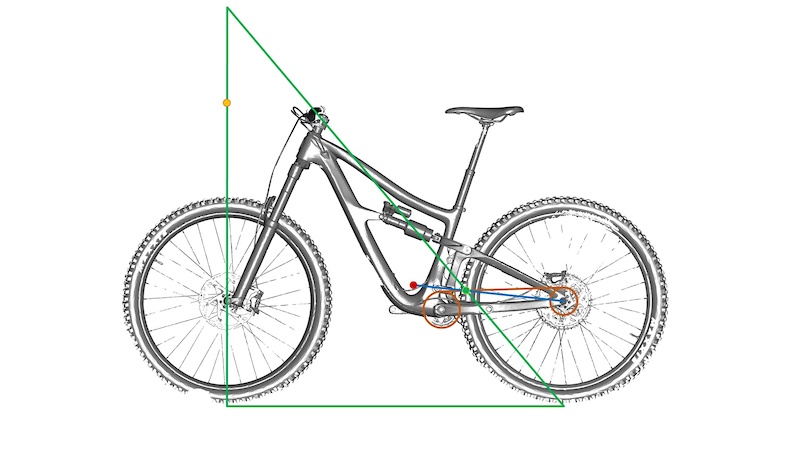
0% Loaded
1/21
The red IC dot is carried over and creates the blue IC - rear axle line. Intersecting that with the chain line we get the instant center of anti-squat, the green dot. The orange dot represents the 100% anti-squat mark.
Pedal Kickback
The Ripmo V2 may be slightly less travel than the Norco Sight, admittedly only 3mm, but it does have more pedal kickback than the Norco, and more than any of the bikes we’ve looked at so far.
In the 50T gear, where the maximum amount of pedal kickback is possible, there is 32.2 °. Compared to the Norco this is 3.4° more. Dropping to the 24T cog the pedal kickback drops to 17.1° and in the 10T it’s down at 8.8°.
Taking our example of going off a 1m drop that uses 75% of travel and being in the 24T cassette cog, how fast would the Ibis have to be travelling to never encounter the effects of pedal kickback? This example situation is based around a certain rear wheel compression time needed to get to 75% travel and then converting the pedal kickback to a speed at the cassette. As long as the bike travels above this cassette speed then the freehub would never catch up the hub body and pedal kickback couldn’t occur. For the Ripmo V2 it would have to be going at 12.5kph or 7.8mph. That’s a fair few kph faster than the bikes we’ve been looking at so far for this mid cassette gear scenario, 2.6kph faster than the Commencal.
Dropping down into the harder gears that critical speed would actually increase a little. In the 10T cog you’d only have to be going 15.8kph or 9.9mph. But, you could take away that for proper descending scenarios, and the associated gears that you’d be riding in you’d likely be higher than this critical speed.
While pedal kickback might be considered a problem for some riding situations, it is a result of the high anti-squat that the Ibis has, which leads to more of a benefit to the riding experience for more of the time than the pedal kickback would pose a problem.
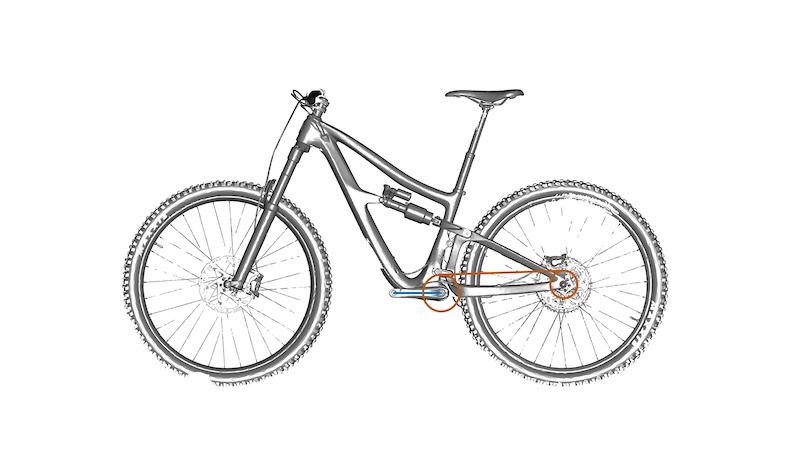
0% Loaded
1/21
Remember that pedal kickback is calculated with a fixed rear wheel and only looks at the influence on the crank. When we ride it can be a different matter. The blue line represents the bike at zero travel and the green shows how the cranks rotate backwards as the bike goes through its travel.
Anti-Rise
The Ripmo V2 has a high level of anti-rise throughout its entire range of travel, starting at 88.4% and finishing at 94.9%. It’s also quite a flat line. The Commencal also exhibited a high level of anti-rise, but dropped off more as the bike approached the end of its travel. The more consistently high characteristic that we saw in the anti-squat is the same in the anti-rise.
That high anti-rise is going to counteract nearly all the load transfer forces trying to extend, or rise, the suspension with rear braking. With anti-rise only analyzing how the bike behaves under rear only braking, once we apply the front brake, we will encounter more forces trying to extend the rear suspension and compress the front. Having a high amount of anti-rise from rear braking only could eventually help keep the rider’s CoG in a more stable position once we’re braking hard with both brakes. It would however keep the bike a bit deeper in its travel and in a firmer spring rate zone. Again, we come back to the many balancing acts that are present in every aspect of a bike’s development.
The rearwardly moving IC that we saw in the animation is how Ibis manage to keep the anti-rise, and anti-squat, so consistently high. As the rear contact patch moves up it wants to move the anti-rise line down over the front wheel. Moving the IC back counteracts that effect and pushes the anti-rise back up.
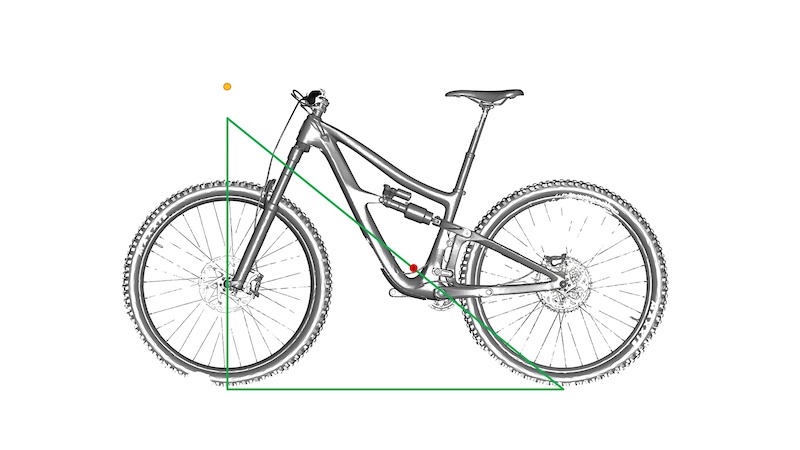
0% Loaded
1/21
It's only the red IC dot we need to calculate anti-rise. The orange one again represents the 100% anti-rise mark.
Axle Path
The Ibis sees the most rearward axle path of any bike yet, albeit it's still a small amount. It also sees the point at which it switches the direction of its movement, from rearward to forwards in compression, deeper in the travel and much closer to the sag point.
The axle path starts off with 2.3mm of rearward travel followed by 12.3mm of forward travel until bottom out when looking at the bike compressing.
Comparing the Ripmo’s axle position to the other bikes we’ve looked at, for the same rear wheel travel the Ripmo is always much further back compared to the other bikes, around 3mm more than the Norco.
With the IC of the Ripmo moving further back on the bike compared to the other bikes, especially towards the end of travel where the top link rotates over the top, the swingarm length on the Ripmo drops to even shorter than that of the Commencal, with its fixed IC at the main pivot. That short swingarm length, all through its travel, is what gives the Ripmo a much more curved axle path than something like the Norco, which had swingarm lengths of 1.5x bigger through its travel.
Assumptions in Analysis
All of the trail bikes that Behind the Numbers have looked at have been size mediums, and so we adjust our center of gravity (CoG) height to 1,100mm above the ground.
It’s good to remember that the analyses for anti-squat and anti-rise always assume a static CoG. In the real world, this is rarely the case, but needs to be done for analysis’ sake to allow it to be easily calculated and then compared to other designs and bikes. Once we have our analysis it’s then easy to add back in the real-world elements that are relevant to each of us and where we ride our bikes. For more chin-scratching about that, check out the Enginerding article on anti-squat.
There’s no industry standard for the fork in anti-squat and anti-rise analysis. We can either fix the fork travel to generate a single curve or we can adjust the fork travel as we go through the rear travel to create a window. For these analyses, we leave the fork at fixed at full travel. Again, as long as these assumptions about anti-squat and anti-rise are known and understood, it’s easier to analyze and compare bikes.
Final Thoughts
Author Info:
Must Read This Week
Sign Up for the Pinkbike Newsletter - All the Biggest, Most Interesting Stories in your Inbox
PB Newsletter Signup

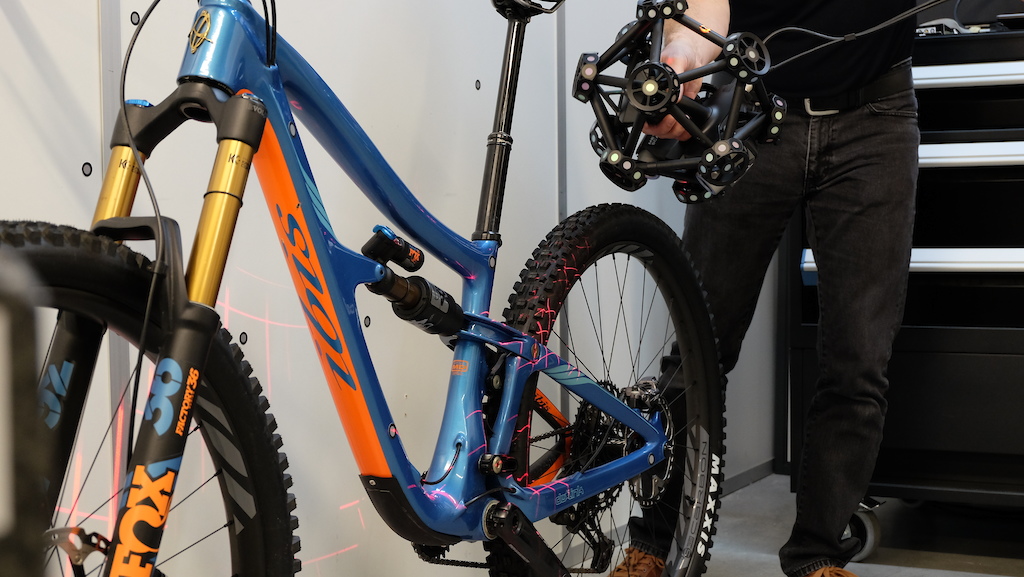
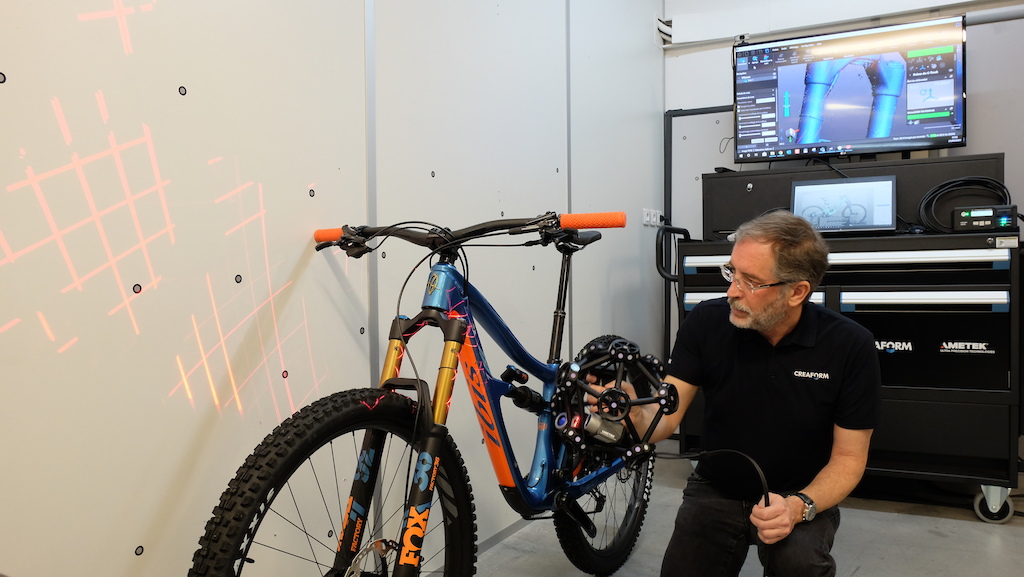
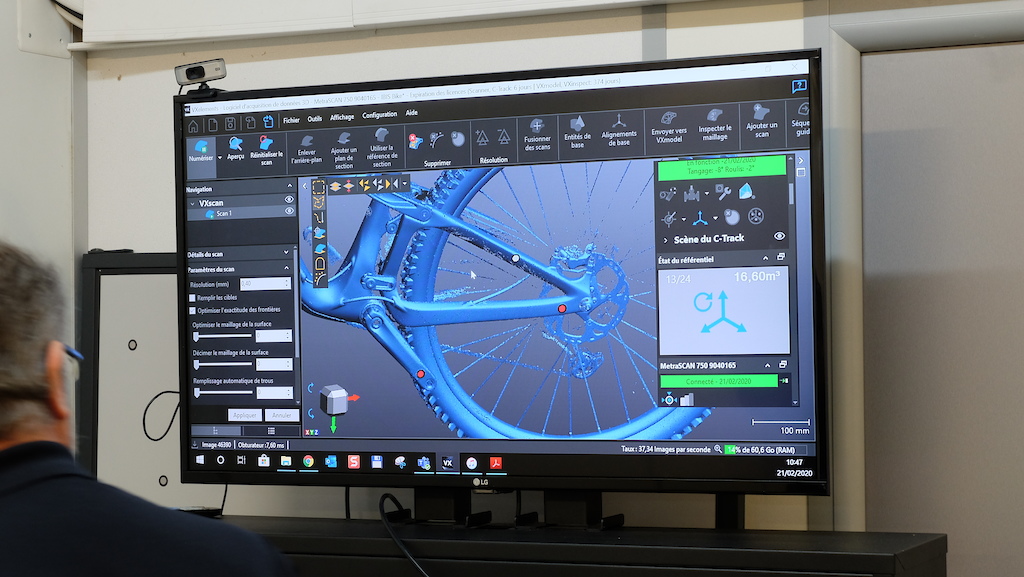
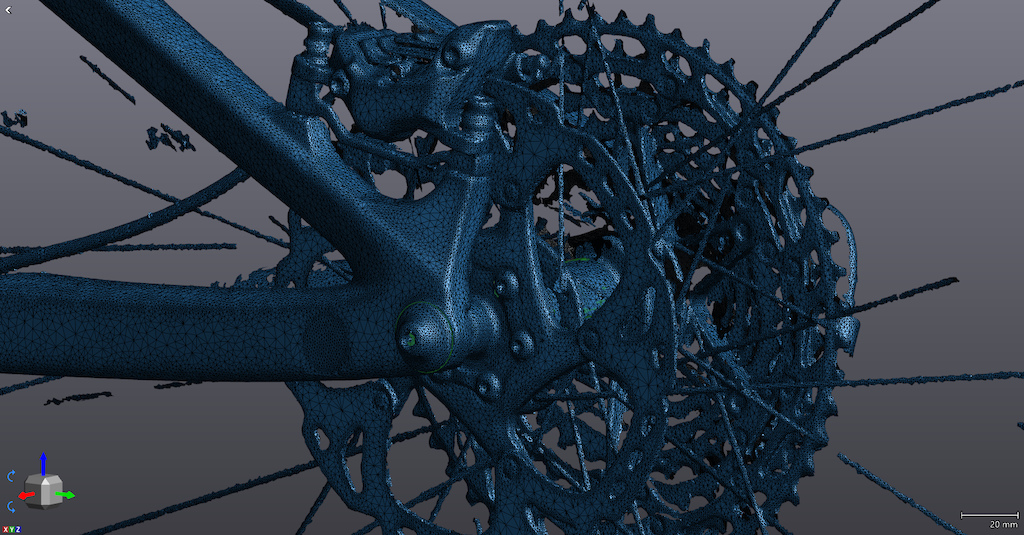

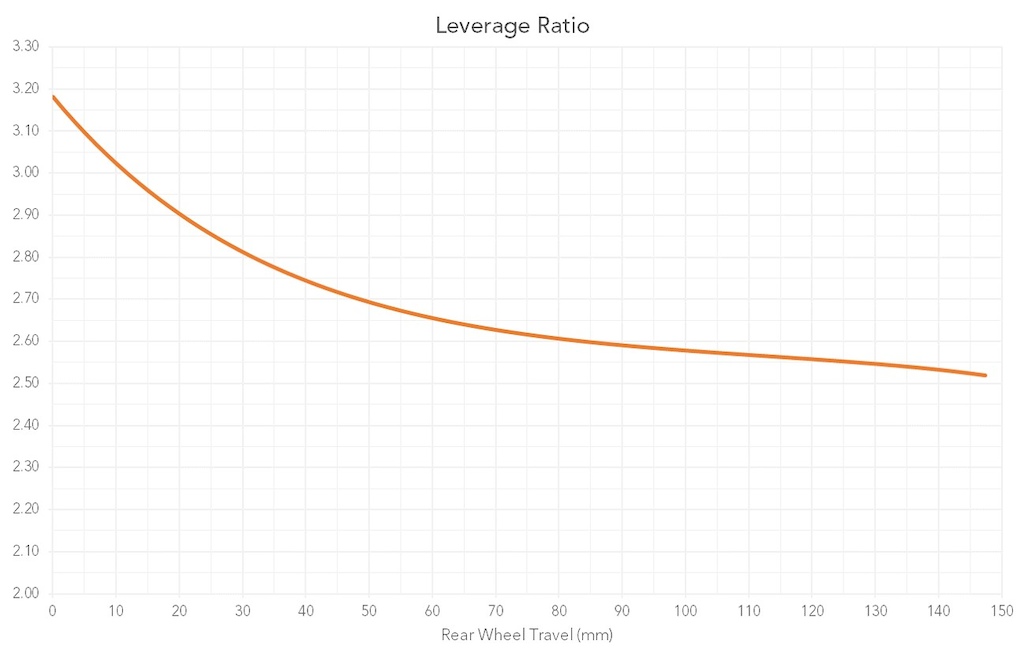
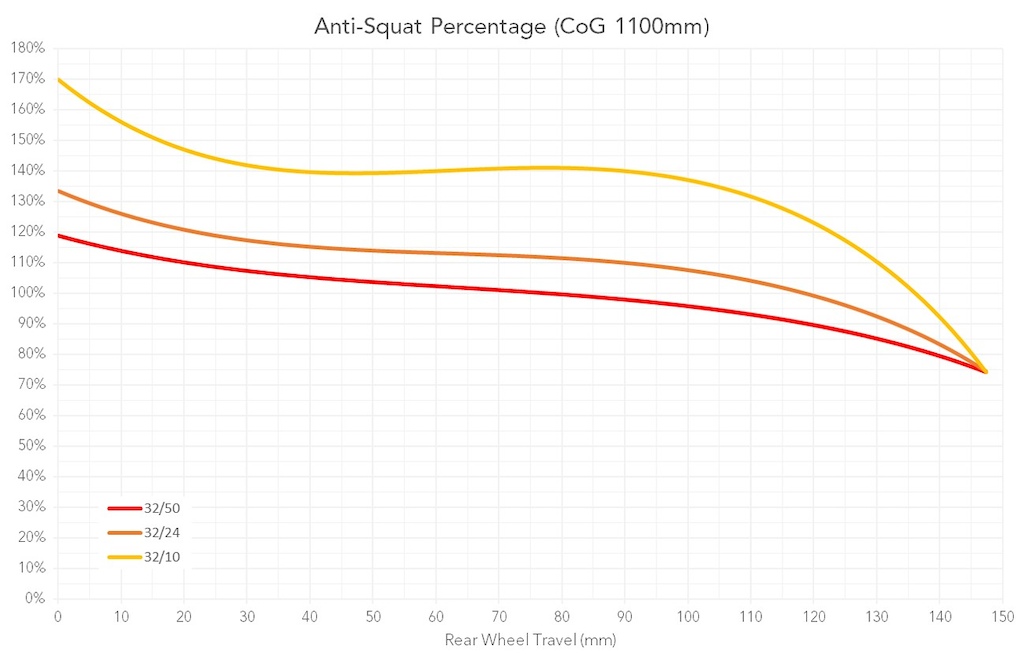

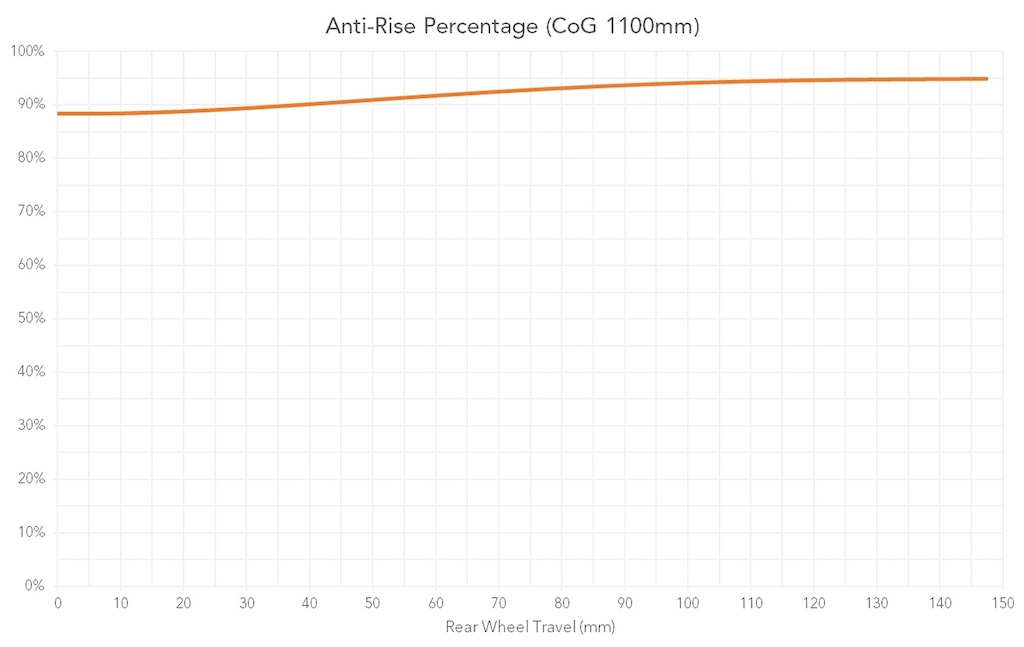
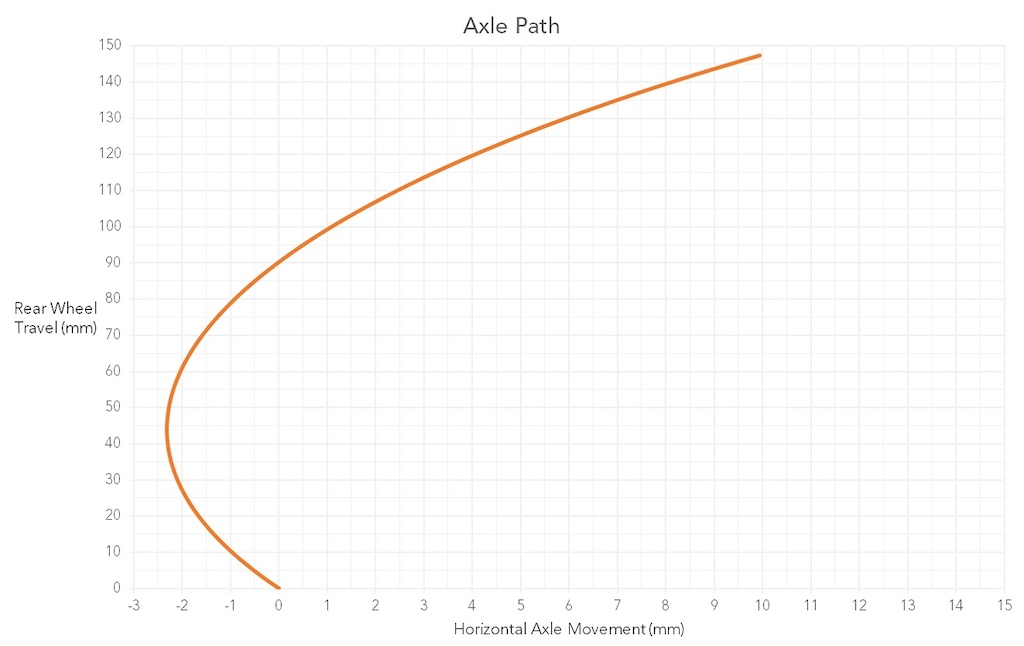
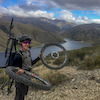
 Member since Apr 6, 2019
Member since Apr 6, 2019
I can help
A Dingo is an Australian wild dog
They are usually found in the outback of mainland Australia, normally in warmer regions. Therefore a dead dingo‘s donga (penis) would be lacking in any form of moisture content.
You can also use
“Dryer than a nun’s nasty”
I won't be able to give you credit, though. "RonSauce" will get more attention than the quote.
Actually showed me how this system works, Which, i guess, is a good thing?...
What i really care about, is that it looks good, and rides well. From what i hear and see, ticks both the boxes.
All anyone needs to know is has the sick knar shredding game changed, or has it not?
28 words to say absolutely nothing. Sick!
To recap: I think this article grossly overstates the effect of pedal kickback with this 44km/h to avoid kickback on a 1m drop to flat in the 32/24 gear.
Running the numbers with this 75% travel used approach, the compression time is approximately 49ms. (assuming linear deceleration during travel) The total kickback at 75% of 145mm travel is 13 degrees at the crank (in 32/24 gear, see the graph in the article) This corresponds to 17.3 degrees at the wheel, which corresponds to a horizontal distance traveled of 11cm. To travel 11cm in 49ms, you need to be going 2.25m/s, or 8km/h.
The 44km/h stated in the article is a factor 5.5 too high! What's up with this??
Here are all the new speeds as a comparison in the 32/24 gear ratio:
Commencal - 9.9kph
Norco - 9.7kph
Unno - 8.7kph
Ibis - 12.5kph
BTW, I see gillish assumes linear deceleration during travel but with all this fancy pants calculations of leverage ratios etc I bet you could do better than that, no? Is that where the 12.5 to 8 kph difference between your number and @gillish comes from? And is compression damping taken into account in that calculation?
I've been taking a compression time of 0.0325 seconds. It's taken from a research paper by Manuel Gerth into the speed and rider effects on pedal kickback. He did some real world tests and I used those to get to the compression time. So that should be accounting for leverage ratio, damping and so on, but unique to that particular bike setup. The paper is here - link.springer.com/article/10.1007/s12283-019-0315-4
I'm desperate to get some data acquisition done to experiment with bike setup and just learn about how this changes the compression times and relevance of pedal kickback in the riding I do round here. And then look at how that lines up with the chin scratching and, as you put it, fancy pants calculations.
The only time I find pedal kickback to be a major hindrance in the real world is when my legs are fatigued and I'm doing slow, steep, and technical climbs. That momentary need for extra power due to kickback when clearing a root or rock ledge on a climb kicks my ass.
In addition, this will not be an on/off thing; it's not like you will suddenly have a big jerk at the pedals, it's more likely that you have a small force at the pedals and that you are very slightly reducing the compression speed because of the interaction with the chain.
But calculating stuff is fun. I wrote a Matlab script once to simulate dynamics of a suspension fork in various terrain . PB me if you would like help to transfer the combo of linkage analysis and shock dyno data to something that appeals more to non technical audience.
Now can we get future calculations in units of burritos for length and potatoes for mass? The rest of us would like to play engineer as well but need some help.
So in fact, in a higher gear you have to be going slightly faster to avoid PK. (at least for this particular frame)
...so yes, I see your point on that. Thanks
I think it would be cool to put all the effort that's going into these "behind the numbers" articles into actual, like, riding-the-bike bike review. The content I get most excited about on Pinkbike is actual reviews. The first few "behind the numbers" things were fun to geek out about the numbers, but now it's mostly meaningless. Ride the bike. Write about it.
I do notice pedal kick back on tech climbs. My legs are putting out max power, I go over a bump, the bike drops on the back side, my fat arse compresses the suspension and the pedals kick back against my fatigued legs. It’s predictable and an ingrained part of my feel for the bike It rarely causes an issue, but occasionally causes me to stall on a tech climb.
However I also like a good bit of 'science', and in my opinion in this case it also matters: the outcome of the analysis is now fundamentally different. I don't think you'll be going 44kph on your bike that often, especially if you encounter 1 meter drops.
On the other hand, you will also probably not be going slower than 12 kph on such a drop as you would be doing an endo pretty soon.
So whereas the previous conclusion was: "serious pedal kickback" on a 1m drop to flat, it is now changed to "very unlikely to have kickback on a 1m drop"
I think the Rascal would be a home run with a two degree steeper seat tube angle. (I'm on a medium frame with something like 300mm of seat tube exposed).
I'm also curious to see suspension curves side by side with Revel Rascal, same linkages varied slightly.
@Dan-Roberts - Content is great. Thank you!
Your user name makes me assume you're into rally car racing where yes I'd agree Lego would come handy because it is more of a 3D affair (with anti-roll bars etc) but as bicycle suspension design is typically a 2D affair, I think you can get away with 2D materials and these usually are more convenient (and cheaper) to work with.
That said, I'd love to see more articles on the 3D effects of bicycle dynamics. Cornering, throwing whips... Straightline suspension action is only a tiny fraction of what makes bicycle dynamics interesting. The PB audience has already been quite vocal about this: wheelsize, head angle... People want to talk about cornering dynamics. As for suspension design, we only need to know whether it remotely resembles a Session (where even a 9.9 doesn't round up to a 10, though idler pulleys are getting hot again).
Pedal kick is the cranks rotating backwards from the rear triangle elongating. The chain can't stretch so the cranks are forced to turn.
Would this cause a bike bike to feel "poppy" when laying into the back wheel? Keeping legs stiff and pushing hard should cause the suspension to feel firmer because it needs to overcome your pushing to move the rear triangle?
Fun on the jumps, freaky on drops to gnar?
Also, as mentioned in other comments, the speeds mentioned in this article to avoid kickback are way too high...
My first suspension bike was a 93 GT RTS, which had over 90 degrees pedal kickback. It was shocking in the parking lot bounce test but I can't honestly say I ever noticed it on the trail.
Of course the wheel is able to start moving faster, accelerating you and the whole bike, if there is a chain force actually pulling on the sprocket. So if indeed you would have a slow-speed huck to flat, and you have weight on your forward pedal, you would be accelerating the bike and yourself a little bit due to the 'PK'. As you say, it's the other-side-of-the-coin wrt chain-induced anti-squat. What they have in common is that both effects are only there if you actually have a positive chain force. And for that to happen on a compression-event while coasting, you need to be going very slowly, otherwise there is no chance that the chain can be pulled tight.
Measuring all those forces would be a whole different type of analysis and would go far beyond what is possible using just kinematics, so it is not typically done. I have also seen people looking at and doing the math about how much chain slap effects suspension performance, which seems to actually affect suspension performance while coasting, whereas pedal kickback seems to have very little effect while coasting, outside of a theoretical slow speed drop, where the wheel can't accelerate or the cranks are welded into a certain position. Even if your cranks were welded in place and the rear wheel was strangely unable to accelerate during this slow speed drop, all that would happen is there would be a maximum speed at which the suspension could compress.
Pedaling a bike through rough terrain that has a lot of pedal kickback feels pretty terrible and it also feels and sounds like you are destroying your drivetrain. On my 1st FS bike had quite a bit of pedal kickback and one day the chain(8speed XT) broke while I was wheeling around in the parking lot at the trailhead after a ride. Upon further inspection every outer link had 2 cracks radiating from the pin holes, don't know if that was due to the extra strain of taking all those shock loads while pedalling through the rough stuff, but I have always wondered.
disclaimer: Ive got a V1
The AF is awesome.
I spent a little bit of time on a newer Scott Ransom last year, and that is more of a crush and plush enduro rig. Pretty dang fun, but in the end I like the more poppy feel of a shorter travel bike for the vast majority of my trail options.
If that’s the case, it’s a bit surprising that Ibis would tool a new mold for such a slight change. Although, since they are using the same chain stay length across all sizes, it would only be one new mold instead of multiple molds.
The "clevis-compatible" is due to the clevis extending the effective e2e of the shock, causing higher load on the shaft of the shock. Since the clevis is quite long this can have quite a big effect (in comparison to the very short extender on Yetis), companies that have had issues with shafts on their coil shocks (fox) does not approve.
Correct though, having the 30t chainring would lessen the kickback in any cassette gear, if and only if, you were able to be in a smaller cassette gear due to having the 30t vs 32t chainring. But the 2 tooth differance up front is a smaller ratio change than having 2 teeth less in the back once you get below the 30 tooth mark on the cassette. Having the 32 tooth will lessen the kickback in every gear on the cassette however.
When I ran 3 chainrings on my FS bike back in the day, the bike pedaled smoother and suspension moved easier while pedaling in the rough stuff, if it was running in the big chainring. The main advantage I perceived when Eagle came out was that I would be able to increase the size of the chainring. I am old and broken, so I ran a 30x42(32x46 on an XT bike, which was slightly easier) on 1x11 full suspension 29ers, so I was excited that a 32x50 would be roughly the same easy gear as a 28x42, while decreasing drivetrain wear, drivetrain resistance and making the suspension work better than it would with a 30t chainring. I am also glad that I could go to a 34x50/51(if I ever actually got myself in shape) and have my same low gear as with my 1x11 bikes, while freeing up the suspension even more and decreasing wear and drag.
@coletrane-mtb: Could you elaborate on that XT hub? I haven’t heard of Shimano doing that, other than Sylence.
Well, in a pedal kickback situation, the chain would also be pulling forward, and thus potentially engaging the hub. The hub can't tell if the chain is pulling because you are rotating the cranks of if there is chain growth from suspension travel. So I don't think that this hub will magically eliminate (coasting-) kickback.
Fortunately, it's pretty much a non-issue anyway!
Ibis DW-link: Minimal rider induced bob with excellent low speed bump absorption, doesn't get hung up pedaling through a rock garden (best in class for pedaling), but sacrifices big hit bottom out resistance dive bombing through said rock garden at higher speed (which can be addressed by different tuning-more air in the can, etc...but then you lose some of the magic pedaling qualities, gets hung up on rocks).
YT (progressive): Feels like a 10-30 mm shorter travel bike at lower speeds, may feel hung up pedaling through the rocks, but performance kicks in when the speeds pick up. You can tune the low speed bump absorption--less air in the can, etc..--but rider induced bob increases and efficiency drops, so its a trade off that's not really worth it.